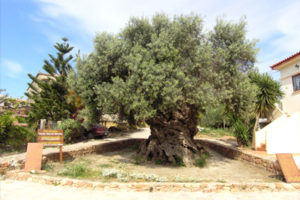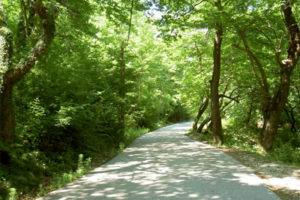
 Chania Old Town
Chania Old Town
The heart of Chania is the Old Town. Start at the Agora and try local Greek cheese pie, fresh fish, and walk away with a tin of locally made olive oil and some spices. Stroll the Jewish Quarter to see lots of historic buildings and a synagogue.

 The Venetian Harbor
The Venetian Harbor
The Venetian Harbor with its lighthouse is the city’s trademark. It was built by the Venetians between 1320 and 1356. The harbor, along with its surrounding area, is famous for its magnificent architecture that combines Eastern and Western elements. It is a nostalgic place full of historical memories but at the same time very vivid thanks to the modern cafes and restaurants near the harbor where you can taste the traditional cretan cusine.

 Elafonisi
Elafonisi
Elafonisi beach is located at the Southern West part of Crete and it is approximately 75km from Chania. It is famous for its crystal clear waters and pink sand, created by millions of pinks shells which, over the years, have been broken into tiny pieces from the waves. In 2000, the area was included in Natura protected areas, as it is full of dunes, white lilies and cedars.
 The Olive Tree of Vouves
The Olive Tree of Vouves
The Olive Tree Museum of Vouves is ideally located next to the Monumental Olive Tree of Vouves, the oldest olive tree in the world, which is visited by approximately 20.000 people every year from all over the world, The museum is housed in a traditional building, which maintains all the characteristics of an austere and, at the same time, authentic, intelligent and functional folk architecture of this area, The Olive Tree Museum of Vouves is located in the village of Ano Vouves, aprox. 30 km west of Chania. Take the Chania – Kissamos national road (E65) and use the Kolibari exit, in order to proceed west (to the left) towards the Village of Spilia. Then, just follow the signs leading to Ano Vouves village and to the Olive Tree Museum of Vouves.

 Samaria Gorge
Samaria Gorge
Samaria Gorge is one of the most scenic places on the island, and just getting there is an adventure.Our suggestion is to take a bus from Chania town to the village of Omalos, which will leave very early in the morning( that is for the reason that after a 4 hours walking inside the gorge you will be far away from your rental car). You’ll head for Agia Roumeli and take a dive into the gorgeous Libyan Sea. You will need to take short boat ride to either Sougia village or Sfakia town to get back to Chania. It’s about four hours total round trip, so bring great walking shoes.

 Therisso Village
Therisso Village
Therisso a small, picturesque village a few kilometres outside Chania, is a historic place. It was the hometown of Cretan revolutionaries Vassilis, Giannis and Stefanos Halis who played an important role in the fight against the Turks and the liberation of Crete. Later, in 1905, Eleftherios Venizelos organized the Revolutionary Assembly in the village that ousted Prince George and precipitated the independence of Crete and its unification with Greece.
 Paleochora Chania
Paleochora Chania
 Paleohora is a lovely summer resort located 80 km south ewest of Chania town. The picturesque village lies between two coves where is also found a lovely port from where boats depart from Sougia and other villages of Crete. The village consist of two wonderful beaches, one with soft sand and one with nice pebbles. Both are gifted with refreshing crystalline waters which are always protected from the strong winds making an ideal place to relax during the summer holidays. Paleochora is a popular summer destination for tourists and is extremely busy during the high season but still there are many quiet places for those who care for some relaxation and tranquility. The village offers many types of accommodations, plenty of restaurants and taverns, shops and bars
Paleohora is a lovely summer resort located 80 km south ewest of Chania town. The picturesque village lies between two coves where is also found a lovely port from where boats depart from Sougia and other villages of Crete. The village consist of two wonderful beaches, one with soft sand and one with nice pebbles. Both are gifted with refreshing crystalline waters which are always protected from the strong winds making an ideal place to relax during the summer holidays. Paleochora is a popular summer destination for tourists and is extremely busy during the high season but still there are many quiet places for those who care for some relaxation and tranquility. The village offers many types of accommodations, plenty of restaurants and taverns, shops and bars

 Falasarna
Falasarna
Falassarna are located 59 km west of Chania and is one of the most popular tourist destinations. They include 5 spectacular beaches, stretching for several kilometers and stands out for its beautiful white sand and crystal clear waters. North, just a few meters from the beach, there is the archaeological site of ancient Falassarna, discovered about the 5th century BC and was one important ancient city of western Crete with rich history. Since 2000, Falassarna has been declared as Natura protected area, due to flora and fauna diversity in the region.

 Balos Lagoon
Balos Lagoon
Balos, west of Chania, will charm the visitors with its turquoise waters, wild natural beauty and exotic landscape, famous across the world. Balos Lagoon is the most photographed beach in Europe
You'll need to negotiate a challenging seven-kilometer rough track, running along Gramvousa Peninsula - be sure to go slowly and carefully. From the car park, hike down a steep footpath (20 minutes), to arrive at this enchanting white sand beach, which extends to a stunning turquoise and emerald-green lagoon.

 Botanic Park & Gardens of Crete
Botanic Park & Gardens of Crete
With its warm, sunny climate and rich, fertile soils, Crete grows olives and grapes, and even farms tropical fruits, such as avocados and bananas. In this carefully tended park, at the foot of the White Mountains, a meandering two-kilometer path takes you through a garden planted with exotic flowers and fruit trees from all over the world, with everything clearly labeled. There are plenty of shady spots with benches amid fragrant herbs such as sage, mint, and thyme. You can borrow a walking stick and hat at the entrance, and a free bottle of water is included with the ticket. There's also a café-restaurant serving traditional Cretan dishes prepared from the park's own seasonal products is a must for plant lovers.Address: Fournes, 18 km southwest of Chania, Crete
Trip to Knossos
 Trip to Maleme to German War Cemetary
Trip to Maleme to German War Cemetary
 Trip to Fragokastello
Trip to Fragokastello

